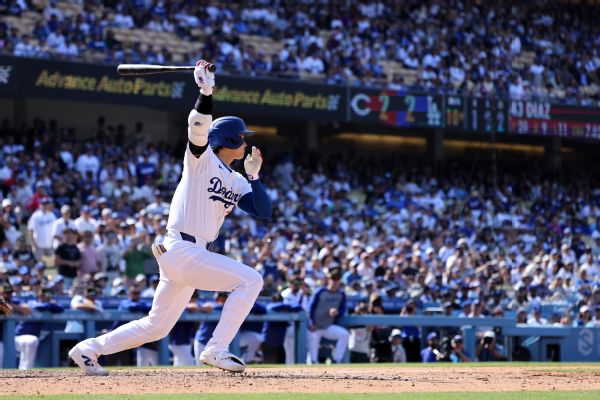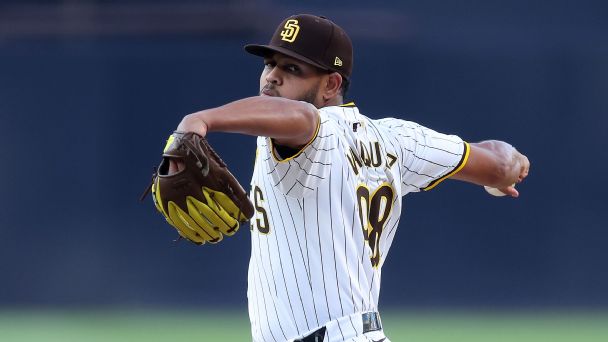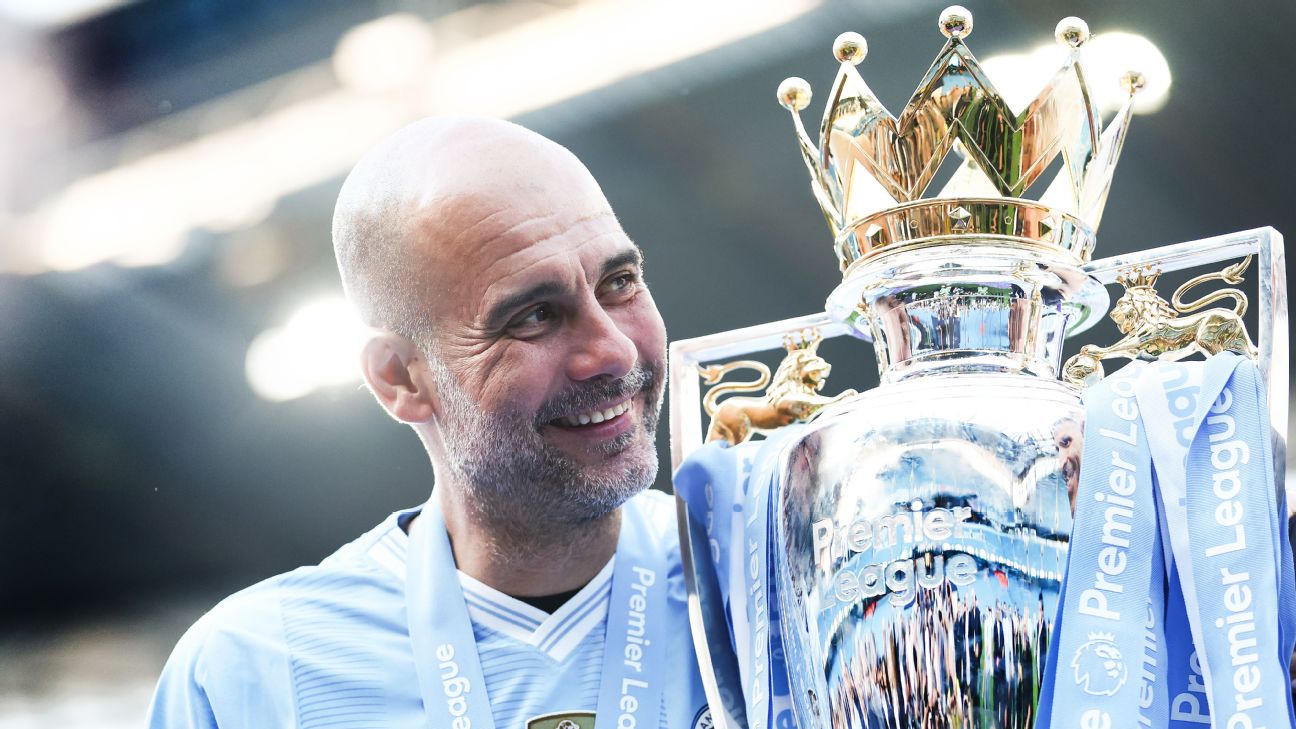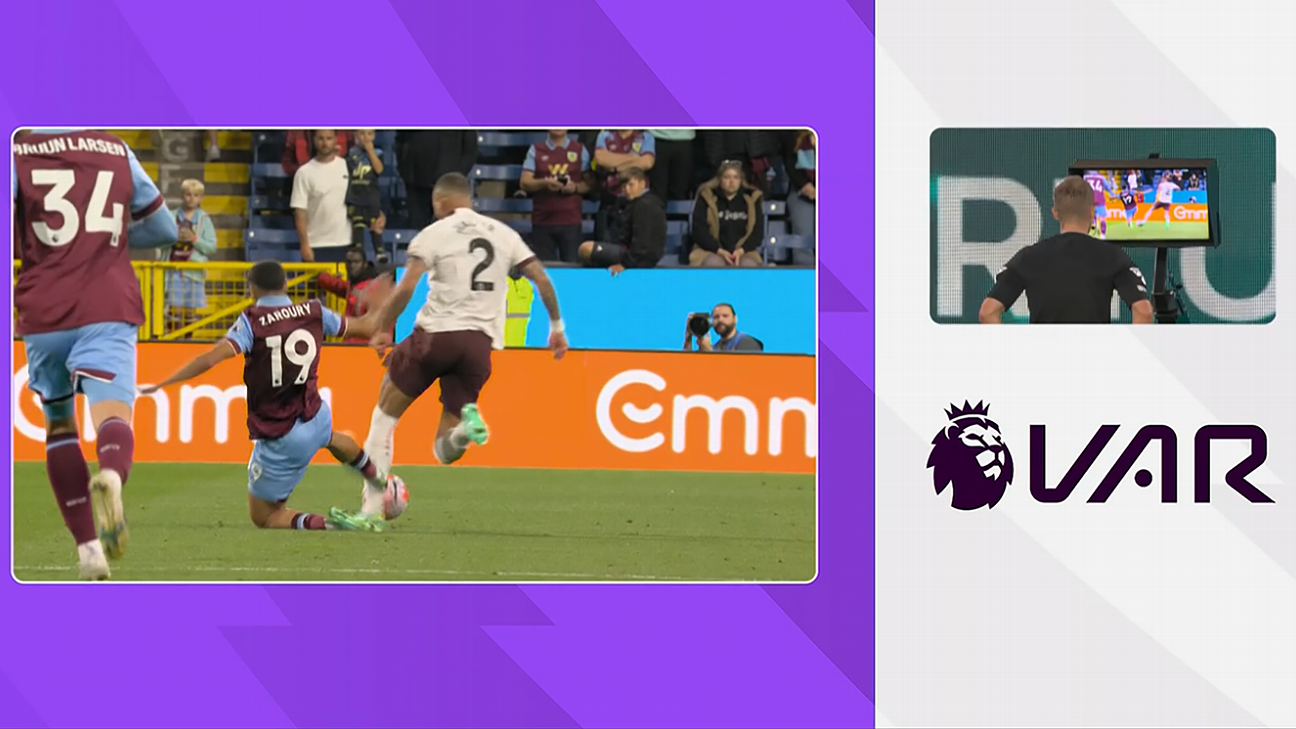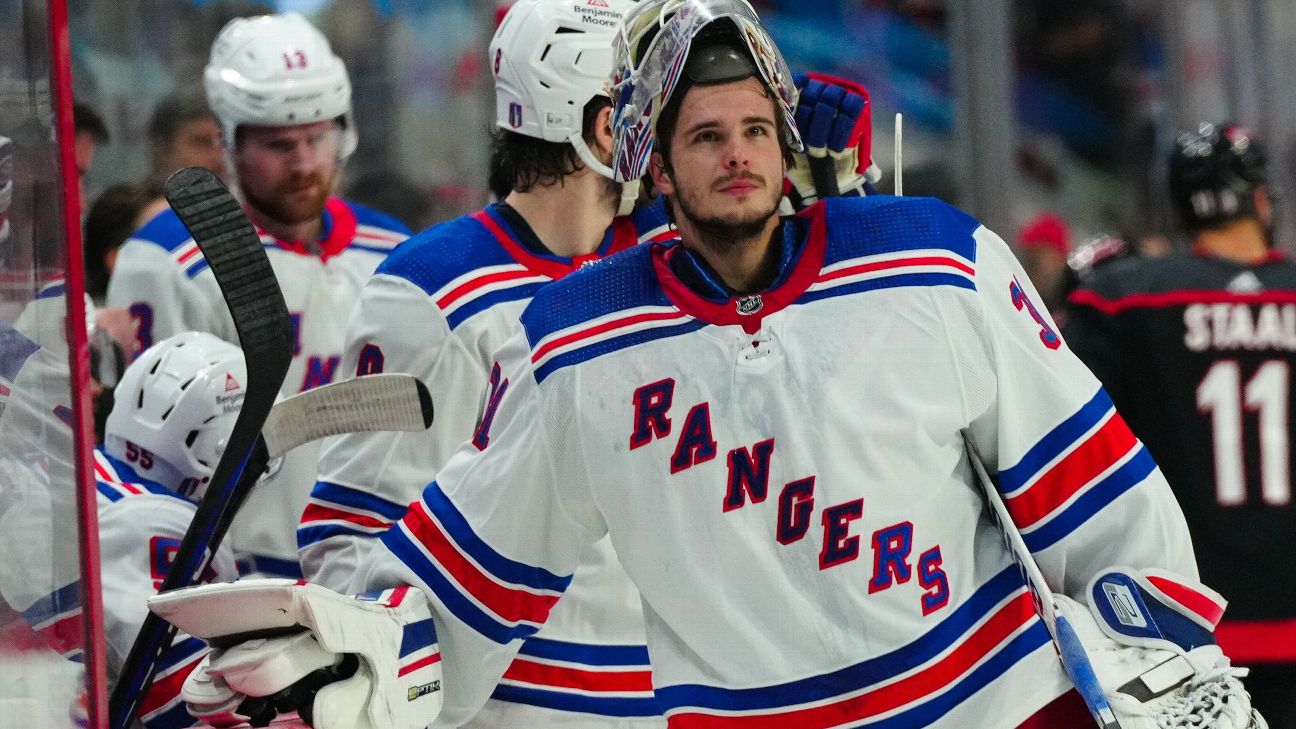![Nuggets [608x342]](https://a.espncdn.com/photo/2024/0509/r1330824_608x342_16-9.jpg)
Jake Fraser-McGurk Matt Short set to be Australia s T20 World Cup travelling reserves
If the Denver Nuggets are going to repeat as NBA champions, it will take a historic comeback now that they've fallen behind 2-0 on their home court in a conference semifinals matchup with the Minnesota Timberwolves.
Despite the Nuggets needing to win four of the remaining five games in the series with just two of them in Denver, history says they are actually in a better position than the other team down 2-0 playing at home Friday -- the Indiana Pacers, who trail the New York Knicks.
In best-of-seven series since the playoffs expanded to 16 teams in 1984, teams that lose the first two games of the series at home are 4-20 (.167) -- with the exception of the 2020 bubble. That's more than twice the winning percentage of teams that lose the first two games on the road (19-218, .080), arguing against the conventional wisdom that a series doesn't begin until a home team loss.
Given those long odds, it's worth considering whether there are any common factors in NBA playoff comebacks from a 2-0 deficit and looking at how they might apply to this year's second-round matchups. Let's see what the Nuggets and Pacers need to do to rally and advance.
An injury or suspension reshapes the seriesHistorically, player absence hasn't been as common of a comeback factor as I expected, but it comes up occasionally. In five of the 23 comebacks since playoff expansion, a player on the team up 2-0 who had averaged at least 25 minutes per game in the first two games of the series missed at least one game the rest of the way.
The rate of absences was lower among teams up 2-0 that went on to win their series. In those cases, a key player missed at least one remaining game in 27 out of 238 series (11%).
The most obvious example is the Portland Trail Blazers coming back to beat the LA Clippers in the 2016 opening round. After Portland won Game 3 at home, the Clippers lost Blake Griffin and Chris Paul to series-ending injuries during Game 4 and the Blazers went on to win the series 4-2. Another 4-2 comeback came when Rajon Rondo missed the last four games of the Boston Celtics' 2017 first-round series against the Chicago Bulls, who had won the first two in Boston.
Perhaps more memorable is a second-round series three years ago. The Brooklyn Nets dominated the opening two games of their matchup with the Milwaukee Bucks at home, but Kyrie Irving left during Game 4, joining James Harden on the sidelines. Harden was able to return but was badly limited and Irving's absence loomed large as the Bucks rallied to win Game 7 on the road en route to the title.
Although it didn't affect as many games, it's hard to forget the Golden State Warriors' Draymond Green missing Game 5 of the 2016 NBA Finals because of suspension as the Cleveland Cavaliers rallied from a 3-1 deficit after previously trailing 2-0. Jerry Stackhouse also missed a Finals game in 2006 after being suspended for a flagrant foul as the Miami Heat completed their comeback from down 2-0 to beat Stackhouse and the Dallas Mavericks.
Multiple injuries have already struck the New York Knicks. Because he played only in Game 1 before suffering a stress injury to his left ankle that will sideline him six to eight weeks, Mitchell Robinson doesn't count toward my criteria. OG Anunoby will qualify, however, as a hamstring strain that forced him out of Game 2 has now ruled him out of Friday's Game 3 and possibly beyond.
Indiana was unable to take advantage of Anunoby's absence and Jalen Brunson missing the second quarter Wednesday with foot soreness, but at some point New York's depth will be tested to the breaking point. Four Knicks played the entire fourth quarter after Anunoby left, with only center Isaiah Hartenstein getting any rest in the period.
The 3-point battle flipsShot-making is possibly the most obvious reason series swing. While falling behind 2-0 in series, teams that came back to win were outshot from beyond the arc by a 39%-33% margin. The rest of the series, they shot 37% to their opponents' 33%.
Teams that come back were not always especially unlucky over the first two games of the series, at least relative to all teams that were down 2-0. The teams that couldn't come back from a 2-0 deficit were outshot from 3 by an even worse margin in the first two games (39%-32%) than those that rallied. They simply never reached their season average of 35%, while their opponents shot slightly better than normal.
Neither the Pacers nor the Nuggets have been outshot quite as badly from 3-point range. Indiana is, in fact, a sizzling 42% from long distance through two games, though New York (47%) has been even hotter. The Knicks have shot better than 47% from 3 over a two-game span twice all season.
Denver is actually shooting better from 3 in Round 2 (36%) than it did in its first-round win over the Los Angeles Lakers (31%). Unlike the ice-cold Lakers, who were just 30% beyond the arc, Minnesota has been slightly above its season average (40%) through two games. Particularly if the Nuggets start throwing more defenders at Anthony Edwards, they'll need those shots to stop falling.
Stars play like itPlayoff comebacks are often memorable for a star taking over the series to bring his team back: LeBron James (with a major assist from Irving) over the last three games of the 2016 NBA Finals, Giannis Antetokounmpo closing out the Phoenix Suns in the 2021 Finals with 49 points in Game 6, and Kawhi Leonard's heroics after the LA Clippers fell behind the Dallas Mavericks 2-0 at home in the 2021 opening round -- the last time a team rallied in the same situation Denver currently faces.
This factor is more than just anecdotal. Defining stars as players with a game score of 20 or better per 36 minutes during the regular season, this group's production drops to an 18.7 game score per 36 in the first two games as their teams fall behind. Over the rest of the series, they've actually outperformed their regular-season play against tougher competition, posting a 23.2 game score per 36.
By contrast, the stars we're comparing these teams to haven't been able to turn things around as their teams were eliminated. The average game score for stars whose teams went on to lose the series is 18.5 per 36 minutes and ranks ahead of only one of the 14 stars whose teams came back from a deficit (Isaiah Thomas for the 2017 Celtics in the series where Rondo was injured).
A star takeover is the Nuggets' best hope for a comeback. Jamal Murray (19.6 game score per 36 minutes) just missed qualifying by my measure this season, but three-time MVP Nikola Jokic (27.8) certainly has hit that mark. Jokic's game score of 18 per 36 minutes through the first two games of this series would be his lowest in any playoff series in his career, and he had only one set of back-to-back games in which his game score was this poor during last year's title run. Intriguingly, that happened in the first two games of last year's matchup against Minnesota -- Jokic's worst series by game score per 36 in 2023.
After last year's title, Jokic no longer needs to answer any questions about his ability to perform in the playoffs. But, if he can lead Denver back in this series, it will only burnish his legacy as an all-time NBA great.


